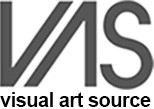When bodies are openly threatened, deported, and condemned, visibility is an act of resistance. Walking the line between abstraction and figuration, All Hands on Deck foregrounds the body. Though each work resists easy definition, together they solicit the prescient question: what are the limits of representation and legibility? Each are conflicting images of form—familiar objects are refashioned into surreal surrogates and art historical depictions of the figure are challenged and appropriated as a means of reclaiming. Mary Shelley’s short novel Frankenstein provides direction: Shelley imagines a creature that is made up of a composite of bodies—mismatched parts, which have been carefully hand-stitched. Dr. Frankenstein’s labor is self-evident. So too, the artists in All Hands on Deck, re-configure and conjure vital forms through material investigations, handwork, and object scale.
Nevine Mahmoud makes stone strange. Borders are dissolved just enough to embrace a delicate place of perplexity and eroticism. It is in these fluid moments, where the object is untethered from its origin, that a thoughtful inquiry on the nature of representation and illusion is clarified. Like Mahmoud, Anna Sew Hoy’s work suggests both a psychic and physical relationship to the body. The utilitarian title Small Breast Plate/Tie Holder implicates both a somatic and functional relationship—presence is conjured and a body imagined. Bari Ziperstein’s ceramic and rope sculptures engage a domestic visual language. Ziperstein’s use of pattern, the decorative and handwork in both glaze and form lend itself to a feminist critique. Cammie Staros also uses the medium of clay to undertake a system of critique. Staros engages an art historical vocabulary by joining Modernism with ancient Egyptian and Grecian forms. These vessel-like sculptures repurpose a historical storytelling with scaled-up human familiarity.
Roni Shneior and Orr Herz’s water fountain, Finish the Words from Your Plate, takes on the abject body, while imbuing it with an uncanny humor. In this work we see the body opened up, stretched and turned inside out. It is both vulnerable as well as inviting, as water rushes down the tongue and into the ghoulish finger pool. Shneior’s other two works in the exhibition, Two Faced Holder and Holder, also speak to the abject body as an impossible container by making the private public, as wax dribbles out of the mouths and nostrils of two bearded heads. These transient moments often don’t have a visible place in our social contexts. Kelly Akashi’s art practice also employs the ephemeral. Her transformative works, which can include candles, glass, fingernails, bronze, and plant matter, make visible a phenomenology. Akashi is an alchemist, building arrangements that bridge the natural and industrial worlds, creating objects that are in a sustained state of fluctuation.
Harry Dodge forces seemingly disparate objects and materials into one another, creating assembled hybrids that both allude to and cancel out familiar bodily forms. Bridging a kind of sensual high tech veneer with a corporeal and organic suspension, both of Dodge’s sculptures included in the exhibition express a polymorphous futurism that border on the unreal. Like Dodge, Isabel Yellin’s soft sculptures are unnerving in their elusive, amorphous, and erotic forms. They both repel and seduce. They are at once alien and familiar—a second skin of sorts. One can’t help but feel like a voyeur when encountering these works with familiar names like Sheila and Stasia, as they demand physical attention and interaction. Young Joon Kwak’s Trans-Creation Relic and Hermaphroditus’s Reveal I, also repel, seduce, and insist. Kwak’s works resist easy definition, engaging in a queer vocabulary that defiantly shifts a gendered reading. In these works, Kwak creates a new art historical lineage guided by radical agency. Ellen Schafer’s installation also proposes new ways in which to interpret the body. Ambiance Apparel is made up of silicone-painted reconstructed long sleeve t-shirts. There is a crisp minimalism in their uniform and totemic seriality within the installation. The absence of the body is striking, though the presence of process and form is tangible—a history of the garment emerges with close viewing.
Julie Henson’s hand arrangements show the power and energy that a crowd of people can produce. Each arrangement depicts screenshot images from two separate performances. In Her Youthful Appearance (Victoria Osteen) we see an animated audience and theatrical lights from behind the speaker, whose raised arms ignite the ecstatic congregation. Victoria Osteen is a co-pastor at Lakewood Church in Houston, one of the largest churches in America. The cut out hands come together in poses of worship and prayer, which provides a doubling in emphasis. Paul Mpagi Sepuya’s work also utilizes the photographic. Using portraiture and the tools of cropping and mirrors, Sepuya’s faceted images engage bodies in a space that address both exposure and concealment. There is at once an inviting intimacy, as well as limitations in what the viewer is permitted to see. The body is both vulnerable and protected in the queer space of the studio.
From hand-built ceramics to carved stone, distressed ready-mades to hand-sewn textiles, each of the Los Angeles-based artists in All Hands on Deck engage the corporeal in an urgent, emotional, tactile, and, at times, humorous manner.
All Hands on Deck is curated by Director of Galleries and Exhibitions Kate McNamara.





